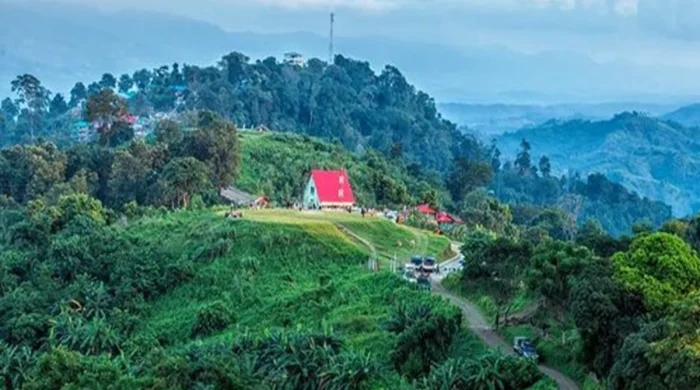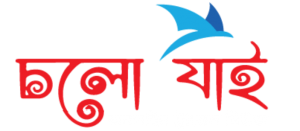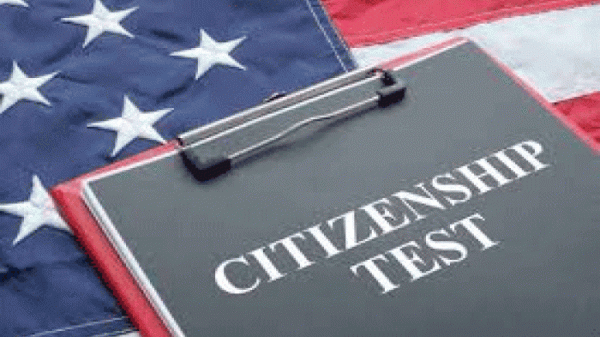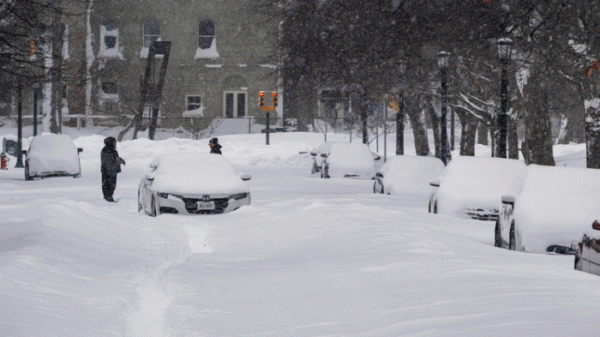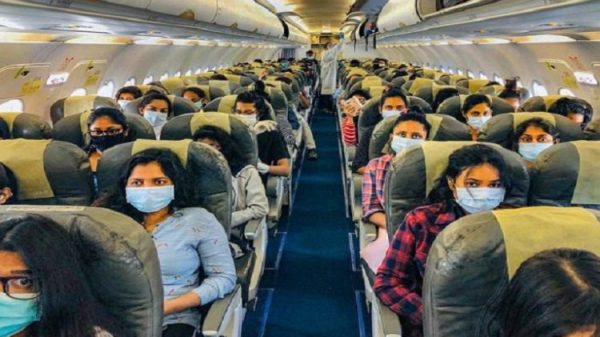What is a Working Holiday Visa (WHV)?
A working holiday is a short-term program to foster cultural exchange between countries and allow young people between 18-35 to gain work experience. Through this type of program, young people can work for 12-24 months in a host country in order to fund their stay there.
Participants generally do jobs of a short-term nature: as interns, seasonal interpreters and tour guides, waiters and baristas, retail workers, farm workers, among others. They shouldn’t be staying for permanent jobs or a long-term career, for which they would need a more traditional work visa. They can neither change their visa status during their program. They will be deported if found to have taken up a permanent job offer on a WHV.
The countries offering the WHV are Australia, New Zealand, Canada, Argentina, Brazil, Chile, Colombia, Ecuador, Mexico, Peru, Uruguay, Taiwan, South Korea, Japan, Hong Kong, France, Belgium, Germany, Denmark, Sweden and Russia. Not all foreign nationals can apply, but only those whose country has a bilateral agreement with the host country of their choice.
All bilateral agreements are not equal, as some provide greater leeway for the maximum duration of stay or maximum age at application. Some have also been suspended because of extraordinary events (e.g.: war) or policy changes. The programs are currently suspended in Russia and Chile. Some programs also have a quota on the number of applicants from a country. Of course, the applicant must come alone and cannot bring a partner or dependents as in a traditional work visa. If their adult partner is also eligible for the program, they must apply for a separate WHV.
Depending on the exact agreement, applicants might also need to provide a certain amount in proof of funds, a clean criminal record, family information, a medical certificate, health insurance, a CV, a cover letter, some level of university studies and proof of language proficiency.
Working Holiday Visas in North America
Canada
The Canadian WHV is open to young citizens of the following countries with which it has a mobility agreement.
It accepts applicants between 18-30 years old from the following countries: Australia, Belgium, Chile, Hong Kong, Japan, Mexico, South Korea, the Netherlands, Sweden, the UK. Applicants up to the age of 35 are accepted from these countries: the Czech Republic, Costa Rica, Croatia, Denmark, Estonia, France, Germany, Greece, Ireland, Italy, Latvia, Lithuania, New Zealand, Norway, Slovakia, Slovenia, Spain, Taiwan, Ukraine. Mexicans exceptionally have a slightly lower age limit: 29.
The duration of the program also depends on the applicant’s country of origin. Those from Australia, Ireland, New Zealand, Portugal and the UK can work anywhere in Canada, for any employer in any sector, for up to 2 years. Swiss applicants can remain for 1.5 years. Meanwhile, the rest of the applicants can stay only for 1 year. During that stay, they can not only work but also take short courses.
There is a yearly quota of applicants for each country, ranging from the 100s to 10,000 to unlimited. Australian and New Zealander applicants face no quotas, Irish applicants have a generous quota of 10,500, and the British also have a somewhat smaller quota of 5,000. It’s a popular destination for English-speaking candidates because of the lack of a language barrier (outside of French-speaking Québec, of course).
Each candidate can be granted a WHV only once in their lifetime, so use it well once you get it! In special circumstances, dual nationals might be granted two WHVs provided that they didn’t do similar programs in other countries.
The Canadian WHV also requires a CV, a cover letter, proof of funds of CAD$2,500 for initial living expenses, health insurance for the whole stay, a clean criminal record (including for relatively minor infractions like drunk driving or drug use), and a return ticket (or alternatively, proof of additional funds to buy that ticket).
Mexico
Mexico has a working holiday agreement with the following countries: Germany, Canada, Chile, Colombia, South Korea, France, New Zealand and Peru. This WHV lasts 1 year and can only be granted once. Applicants between 18-30 are eligible, and the quota for each country is currently 300 visas per year.
Applicants need to provide proof of funds of around 2,500 USD, a pre-booked return ticket (or funds to buy one later), a clean criminal record, a medical certificate, medical insurance, a proof of address in their home country, as well as a cover letter explaining why they want to be in Mexico.
The cover letter should explain what applicants find attractive about the country. The letter must be in Spanish, but it can be a translation. It’s the same case as for the cover letter for Ecuador’s WHV. Even if applicants do not need to show any Spanish language test results, it does help to already know some Spanish and be able to write the letter directly oneself.
Working Holiday Visas in Central & South America
Argentina
The Argentinian WHV is available to young people between 18-30 from the following countries: Australia, Denmark, France, Germany, Ireland, Japan, Netherlands, New Zealand, Poland, Portugal, South Korea and Sweden. New Zealanders and the Irish have an extra advantage, for they can apply up to the age of 35. They have an annual quota of 1,000 and 200 visas, respectively. Australians have a higher quota of 1,500 visas. This visa can only be granted once and lasts 12 months. However, visa holders can only work for 6 months per employer.
Applicants need to submit a cover letter, a medical certificate, health insurance and a clean criminal record. They also need to show proof of income equivalent to around 2,500 US dollars. While there is no language requirement, it’s best to learn some Spanish before coming in order to integrate better. Argentina has a vibrant agricultural sector WHV-holders can volunteer or work in. Is there anything more romantic than working in a vineyard? You can also study for a course while working.
Brazil
Only two countries have a bilateral WHV agreement with Brazil: France (quota of 500) and New Zealand (quota of 300). Unfortunately, applicants from other English-speaking countries are not eligible. Applicants need to be between 18-30. They need to submit proof of funds equivalent to 2,500 US dollars (around 4,000 New Zealand dollars), a medical certificate, a clean police record, a travel insurance and a cover letter.
While both the French and New Zealanders can work in Brazil for 12 months, the second are subject to additional restrictions. They cannot work for the same employer for more than 3 months, do a course of longer than 6 months or take up any offer of permanent employment. While there is no language requirement to obtain the visa, it’s highly recommended to take some Portuguese courses to increase your chances of getting a job and adapting well to the workplace.
Colombia
Colombia’s WHV is open to the following nationalities: Peru (quota of 300), Mexico (300), Chile (300) and France (400). The other three Central and South American countries are in a Pacific Alliance with Colombia, and France has a special bilateral agreement with the country. Unfortunately, citizens of no English-speaking country are eligible. The WHV lasts for 1 year. The applicant needs to submit a cover letter, a commitment form (to state that they intend to stay in Colombia only temporarily), a medical certificate, health insurance, a clean criminal record, around 1,300 USD in funds and pre-booked return tickets. Only one WHV can be granted per applicant.
Chile
This WHV has been suspended since early 2022. There is no information yet about when it will be resumed. In normal times, Chile’s WHV is open to citizens of the following countries: Canada, New Zealand, France and Germany. Canadians and New Zealanders can be as old as 35, while the two other nationalities have a maximum age of 30. Even if an applicant has dual nationality from two eligible countries, he may apply only once. The visa is valid for 1 year, but participants cannot work for the same employer for more than 6 months.
Ecuador
Only two countries have a working holiday agreement with Ecuador: Australia and France. Australians get a quota of 100 visas per year. It is a 1-year WHV that is multi-entry and allows participants to visit neighboring countries. Australians need to provide proof of funds of 400 US dollars per month (around 600 Australian dollars), a medical certificate, health insurance, a clean criminal record, a pre-booked return ticket (or funds to get buy one later) and a cover letter in Spanish (which can be translated).
Peru
Peru has WHV agreements with these countries: Australia, France, New Zealand, Portugal, Chile, Colombia and Mexico. Applicants must be aged 18-30 for this 1-year, multi-entry WHV, which can only be granted once. Currently, the annual quota for Australians is 1,500 visas and for New Zealanders is 100 visas. The visa’s application fee is free, and its multi-entry nature allows participants to visit nearby countries. Applicants need to provide proof of funds of 2,500 USD, a medical certificate, health insurance, a clean criminal record, a return ticket (or funds to buy one later) and a cover letter. Like in Mexico and Ecuador, for administrative reasons, the letter should be written in Spanish, but you can also ask a friend fluent in the language to help you write or translate it. It’s best if you already know enough Spanish to write it on your own.
Uruguay
Uruguay’s working holiday visa is open to just three nationalities: Australians, New Zealanders and the French. The first two nationalities have a quota of 200 visas per year each. It lasts 1 year and allows participants to visit nearby countries on short trips (multi-entry visa). Furthermore, participants can only work for one employer for a maximum of 6 months. The documents required for application are the same as in the countries described above (Mexico, Peru, etc.). The cover letter also has to be in Spanish for administrative reasons.
Working Holiday Visas in Europe
France
The 1-year French working holiday program is open to many nationals. Applicants from Australia, Argentina, Brazil, Canada, Chile, Colombia, South Korea, Ecuador, Japan, New Zealand, Hong Kong, Mexico, Peru, Russia, Taiwan and Uruguay. Most applicants need to be 18-30, but applicants as old as 35 are accepted from Canada, Australia and Argentina.
Canadians and Australians also have the additional flexibility of submitting their application through any French embassy or consulate, even one in a country where they don’t have the nationality. However, New Zealanders are bound by a restriction: they need to get a work permit upon being selected for a job, even if they already have the WHV and have already entered France.
As for quotas, there is no limit for Australians and New Zealanders. Canadians, however, have a quota of 8,585 visas, an increase of around 1,500 from 2021. The proof of funds required also varies between countries. Canadians need to have CAD$2,500, around €1,800, while Australians need to have a higher amount: AUD$5,000, around €3,000. New Zealanders need to have the equivalent of €2,500.
Applicants need to write a motivation letter, and they can optionally also attach a CV. They need to have a medical certificate, health insurance, a criminal record, and a return ticket (or the funds to buy one later). As France is part of the Schengen Area, participants will also have the chance to travel to other countries in the area. However, of course, they cannot work in these other countries. Neither can they work in Overseas French Territories (Reunion Island, French Polynesia, New Caledonia, etc.), as the program only applies to metropolitan France. They can study during their stay, but these studies must not bear academic credits.
Germany
Germany’s one-year D-Visa for working holidays accepts participants from Argentina, Australia, Brazil, Chile, Hong Kong, Israel, Japan, New Zealand, South Korea, Hong Kong, Taiwan and Uruguay. Those from Australia, Canada, Israel, Japan and New Zealand can even travel without a visa to Germany first and then apply for a working holiday permit within the country. Other nationalities need to apply from outside Germany.
All applicants need to be no older than 30, except for Canadians, who can be aged up to 35. Like in other countries, they can only get the WHV once in a lifetime. Some nationalities are restricted by a quota, but those from the English-speaking countries in the list (Australia, New Zealand, Canada and Hong Kong) are not.
There are varying restrictions depending on the participant’s nationality. Australians, New Zealanders, Japanese and Argentinians cannot do freelance work on this visa. Argentinians may only work for 6 months of their whole stay: they need to live off savings for the remaining 6 months. Israelis can only work with an employer for 3 months, i.e., they need to switch jobs every 3 months. Meanwhile, those from Australia, Chile, Japan, New Zealand and Uruguay can work for a maximum of 6 months with the same employer before needing to switch. When they switch jobs, they are allowed to take multiple part-time jobs.
Applicants can write their motivation letter in either German or English, which makes things easier for English speakers. They need to have health insurance for the year, a clean criminal record, a return ticket (or funds to buy it later), as well as funds for the first few months in Germany.
The exact minimum amount required for these months varies according to the exact bilateral agreement, but it’s between €1200 – €4,500. New Zealanders need €2,000, while Australians need a high AUD$ 7,100 (about €4,500). To avoid needing to show proof of so much money, Australians can alternatively apply for the WHV inside Germany, where they’ll need the same amount as New Zealanders. How about Canadians? They need proof of funds worth €3,000. Hong Kongers need €2,000 like New Zealanders.
Denmark
The 1-year Danish working holiday program is open to citizens of the following countries: Argentina, Australia, Canada, Chile, Japan, New Zealand and South Korea. All applicants need to be between 18-30, except for Canadians, who can be as old as 35. Canadians have an annual quota of 350 visas, Australians are limited by a quota of 100 visas and New Zealanders aren’t restricted by any quota.
An advantage of this WHV is that its application process is free. However, a limitation is that it allows participants to work for only 6 months in Denmark, for 3 months per employer. For the remaining 6 months, participants need to depend on their savings. Studying during their stay is also allowed for only a short 3 months (out of 12). The documents required for application are the same as in Germany, with the addition of a compulsory resume. The letter of motivation can be written in English, not only Danish.
The proof of funds required varies between agreements. For Canadians, it is 15,000 kronas (about 2,900 Canadian dollars). For Australians, it is 18,000 kronas (about 3,800 Australian dollars). And for New Zealanders, it is a whopping 24,000 kronas (nearly 5,500 New Zealand dollars). Like in the case of France, the WHV gives participants a chance to also travel around the Schengen Area.
Russia
The Russian working holiday program is currently suspended because of the EU’s sanctions against the country after the Russo-Ukraine war. This program was open to only French nationals aged 18 to 30, who could work and study in the Russian Federation for 4 months while traveling. It wasn’t open to nationals of any English-speaking country.
Sweden
Sweden’s 1-year working holiday program is open to nationals of the following countries: Australia, Hong Kong, Canada, Japan, New Zealand and South Korea. All applicants need to be between 18 and 30. Australians and New Zealanders aren’t restricted by a quota, but among English-speaking countries, Canadians and Hong Kong are limited to 550 and 500 visas per year, respectively.
The documents that need to be submitted are the same as in other European countries (France, Germany, etc.), with the addition of a proof of address. The proof of funds required is 15,000 kronas, equivalent to about 1,500 USD. Like in Denmark’s and France’s programs, the WHV gives participants the chance to also travel around the Schengen Area. While in Sweden, they can work for any employer for a maximum of 6 months and then need to switch jobs.
Working Holiday Visas in Asia
Hong Kong
Hong Kong’s 1-year working holiday program is open to young adults aged between 18 and 30 from the following countries: Australia, Austria, Canada, France, Germany, the Netherlands, Hungary, Ireland, Japan, South Korea, New Zealand, Sweden and the UK. As for quotas for English-speaking countries, Australia can currently get 5000 visas per year, the UK gets 1000 visas, Ireland and Canada each get 200 visas, while New Zealand only gets 100 visas.
As Hong Kong is also an English-speaking city, all administrative procedures will be carried out in English, without any need to know Cantonese or Chinese. Applicants must have the same kind of documentation as required in WHV programs in Europe and South America, and they must show proof of funds of 25,000 Hong Kong dollars (around 3,000 USD). Please bear in mind that Hong Kong is one of the most expensive cities in the world, so you will likely need additional savings. You might not be able to meet all of your daily expenses with only a job as a waiter or tutor. Studies are not allowed during the program, only work.
Japan
Japan’s one-year working holiday program accepts applicants from 26 countries. They are Australia, New Zealand, Canada, South Korea, France, Germany, the UK, Ireland, Denmark, Taiwan, Hong Kong, Norway, Portugal, Poland, Slovakia, Austria, Hungary, Spain, Argentina, Chile, Iceland, the Czech Republic, Lithuania, Sweden, Estonia and the Netherlands.
Do English-speaking countries have a quota? Australia and New Zealand have no quotas. However, there is an annual limit of 800 visas for Ireland, 1,000 visas for the UK and 1,500 visas for nearby Hong Kong. The age limit for most countries is 30, but Iceland has a lower age limit of 26, and an age limit of 25 applies to participants from Canada, Australia and South Korea.
The documents required are the same as in the other countries described above (health insurance, clear criminal record, etc.), but a resume, any educational diplomas and an itinerary are also required. The resume should detail all academic and professional experience. The itinerary should detail the cities where the participant intends to stay, the jobs and other activities they intend to do, etc.
All of these aforementioned documents can be in English. While no level of Japanese proficiency is required to participate, it’s strongly recommended to learn some Japanese beforehand because English proficiency is still fairly low in the country. You are allowed to study the local language only for 3 months during the program.
As for proof of funds, it varies between 2,500-4,000 USD, depending on the bilateral agreement. For Australians, it’s 2,500 AUD. For Canadians, it’s 3,500 CAD. For the British, it’s 2,500 pounds. For New Zealanders, it’s 3,000 NZD. For the Irish, it’s about 3,500 euros (500,000 yen). Tokyo trails behind Hong Kong as one of the most expensive cities worldwide, so do bring additional savings with you if possible if you’re going there.
Unlike other countries, the WHV program in Japan prohibits participants from working casual jobs in many workplaces/sectors deemed to affect “public morals”: bars, cabarets, nightclubs and gambling establishments. Hence, they can be waiters in restaurants but not in nightclubs. Their visa will be canceled if they are found to work in these prohibited jobs.
Taiwan
Taiwan has a work holiday agreement with 17 countries: Australia, Austria, Belgium, Canada, Czech Republic, France, Germany, Hungary, Ireland, Japan, Korea, Luxembourg, the Netherlands, New Zealand, Poland, Slovakia and the UK. Most applicants, including those from Australia, New Zealand and Ireland, need to be no older than 30. Canadians, Czechs and Slovaks can be as old as 35.
The annual quota for English-speaking countries is 1000 for Australia, the UK, and Canada each, 400 for Ireland and New Zealand each. The proof of funds required also varies between agreements, but it’s generally between 2,500-3,000 USD. For Canadian and Irish applicants, it’s 2,500 Canadian dollars or euros. For Australians and New Zealanders, it’s 100,000 Taiwan dollars, which is around 5,000 Australian or New Zealand dollars.
The duration of the WHV is, like in many other countries, 12 months, and participants are allowed to enroll in Chinese classes for only 3 months out of these. For longer classes, foreigners need a proper student visa. The supporting documentation required for applications is like in the other countries described above (clear criminal record, return ticket, etc.), but there will also likely be an interview.
South Korea
South Korea’s 1-year working holiday visa program is open to nationals of 25 countries: Argentina, Australia, Austria, Belgium, Canada, Czech Republic, Chile, France, Denmark, Germany, Hong Kong, Hungary, Ireland, Italy, Japan, New Zealand, Portugal, Netherlands, Sweden, Taiwan, United Kingdom, United States of America, Israel, Chile and Ireland.
What quotas do applicants from English-speaking countries have? For the US, it’s 2000 visas per year. For both the UK and Hong Kong, it’s 1000. For New Zealand, it’s 3000, and there’s no limit for Australia. For Canada, it’s 4000. While the visa is non-renewable, an extension of 6 months can be granted to American citizens and an extension of 1 year to British citizens.
There are work and study limits attached to the visa. Work must be part-time, for at most 25 hours per week. Participants may only take Korean language classes at private institutes, but they cannot do short-term programs at regular universities or earn university credits. WHV-holders are also barred from certain jobs: jobs in entertainment venues (dancers, singers, receptionists, etc.) and as doctors, lawyers, teachers, pilots, reporters, journalists or researchers.
The age requirement is the same for everyone: 18 to 30. Because some eager participants couldn’t travel during the pandemic, the upper age limit has exceptionally been raised to 32 until March 2024. The proof of funds required is around 3,000,000 won, which is around 2,300 USD. The rest of the supporting documentation is the same as in other countries (clear criminal record, health insurance, etc.).
Working Holiday Visas in Oceania
Australia
The 1-year Working Holiday Visa (Subclass 147) is open to citizens of the following countries: Belgium, Canada, the Republic of Cyprus, Denmark, Estonia, Finland, France, Germany, Hong Kong, Ireland, Italy, Japan, South Korea, Malta, the Netherlands, Norway, Sweden, Taiwan and the UK. The age requirement is 18-30, except for the Danish, French, Italian and Irish, who can be as old as 35.
The proof of funds is around 5,000 Australian dollars, and other supporting documentation is similar to other countries in this list (health insurance, clear criminal record, return ticket, etc.). Applicants from countries not classified as English-speaking also need proof of English language proficiency through a test like the IELTS or an educational qualification.
Under this program, participants can study for up to 4 months in non-degree courses. It is also a multi-entry visa, so they can leave and re-enter Australia as many times as they want in that year. A big difference between Australia’s WHV and other countries’ is that this one can possibly be renewed once. This is for participants who completed 6 months of work in a field suffering from labor shortages in Australia: healthcare, mining, construction, agriculture, tourism, bushfire and flood recovery work. This is especially if they did the work in rural and remote regions most affected by labor shortages.
New Zealand
New Zealand’s 1-year or 2-year WHV is open to nationals of a long list of countries: Argentina, Austria, Belgium, Brazil, Canada, Chile, China, Croatia, the Czech Republic, Denmark, Estonia, Finland, France, Germany, Hungary, Hong Kong, Ireland, Israel, Italy, Japan, South Korea, Latvia, Lithuania, Luxembourg, Malaysia, Malta, Mexico, the Netherlands, Norway, Peru, the Philippines, Poland, Portugal, Singapore, Slovakia, Slovenia, Spain, Sweden, Taiwan, Thailand, Turkey, the UK, the US, Uruguay and Vietnam.
Like Australia, New Zealand is trying to temporarily solve its labor shortages by relying on WHV holders. As such, it has increased its quotas, even to the point of doubling the quota for some countries. For instance, there are an extra 3000 visas available for Koreans as of September 2022. Check the website of Immigration New Zealand for the full list of quota increases. Those whose visas expire between August 2022 and May 2023 are being offered a 6-month extension to keep more workers in the country.
The visa’s duration is 12 months for most applicants but 23 months for the British and Canadians. The upper age limit is generally 30, but it’s 35 for select countries, notably the UK. The strong bilateral agreement between the UK and New Zealand could also soon allow British participants to stay in the country for 3 instead of 2 years. The supporting documentation to apply is standard: proof of funds of NZ$4200 for the year, medical certificate, health insurance, clear criminal record, return ticket or the funds for it.







